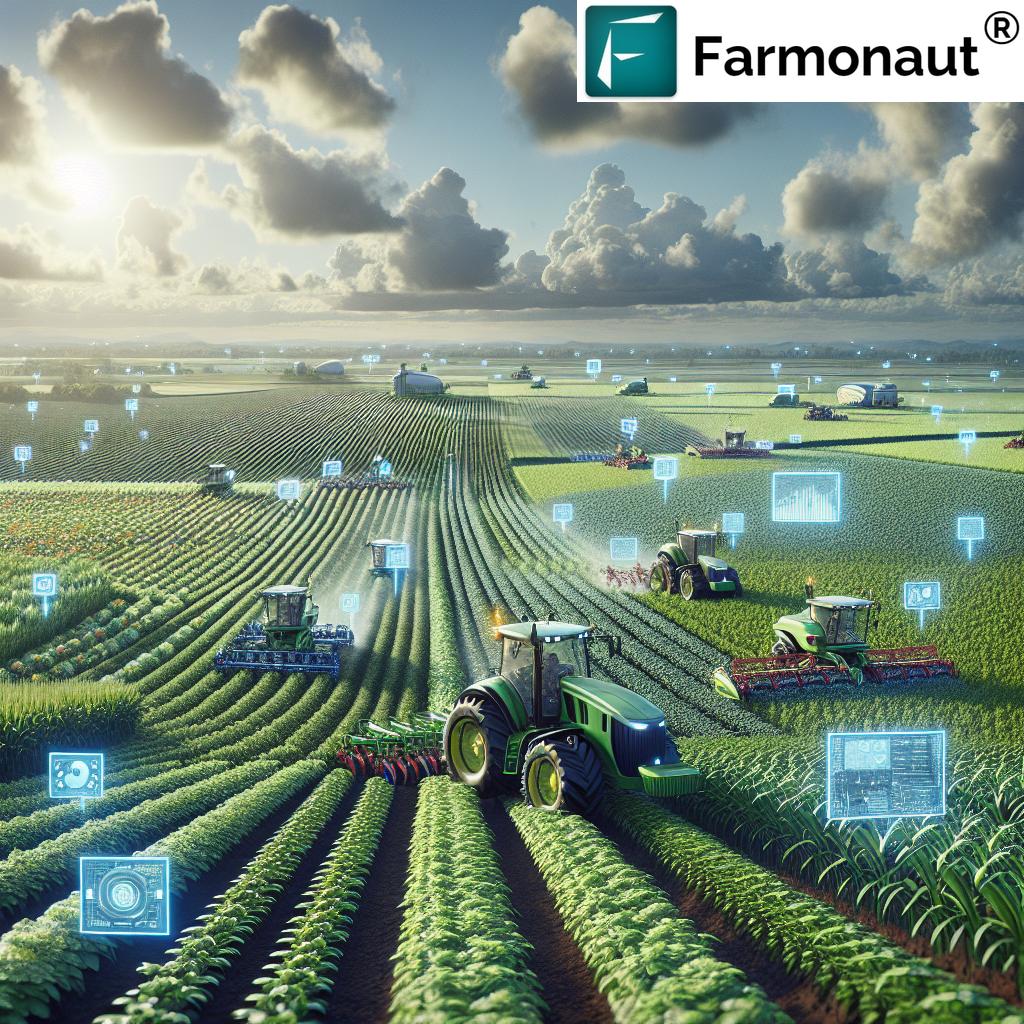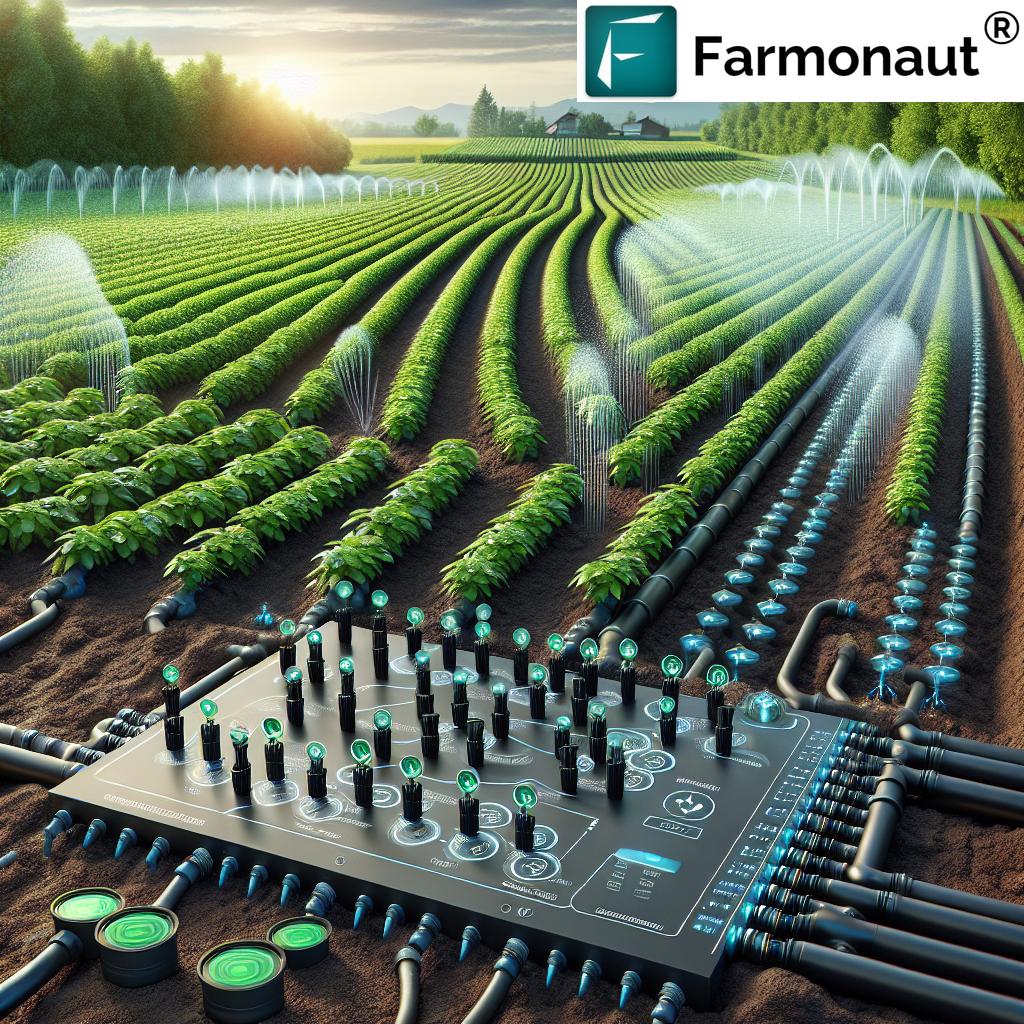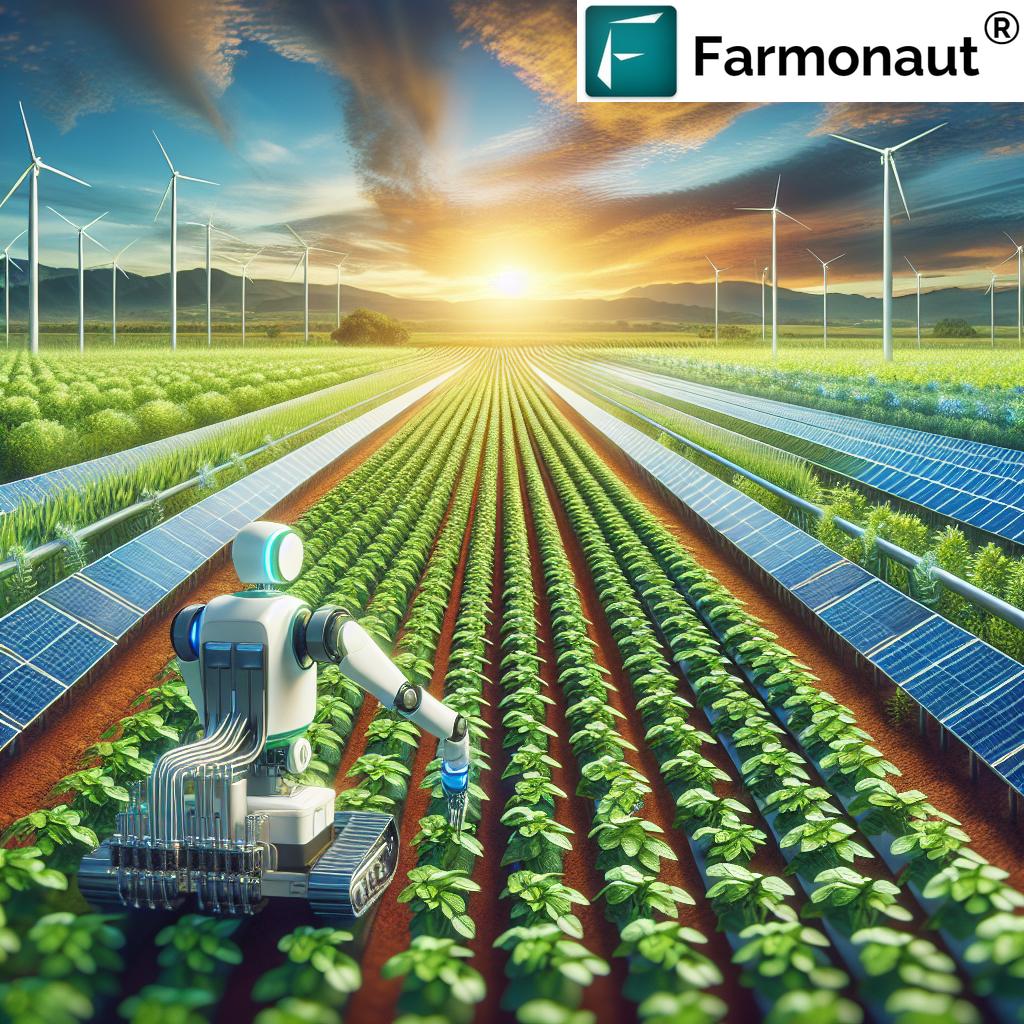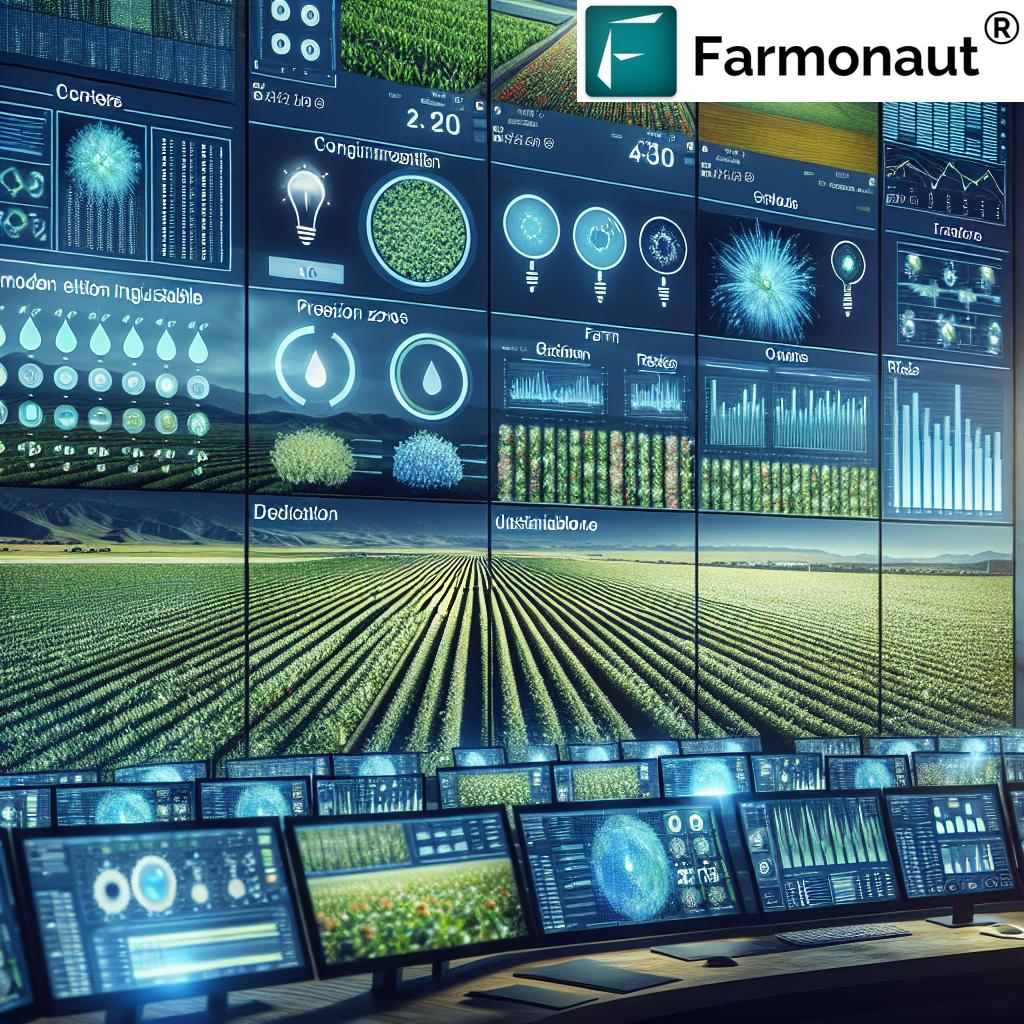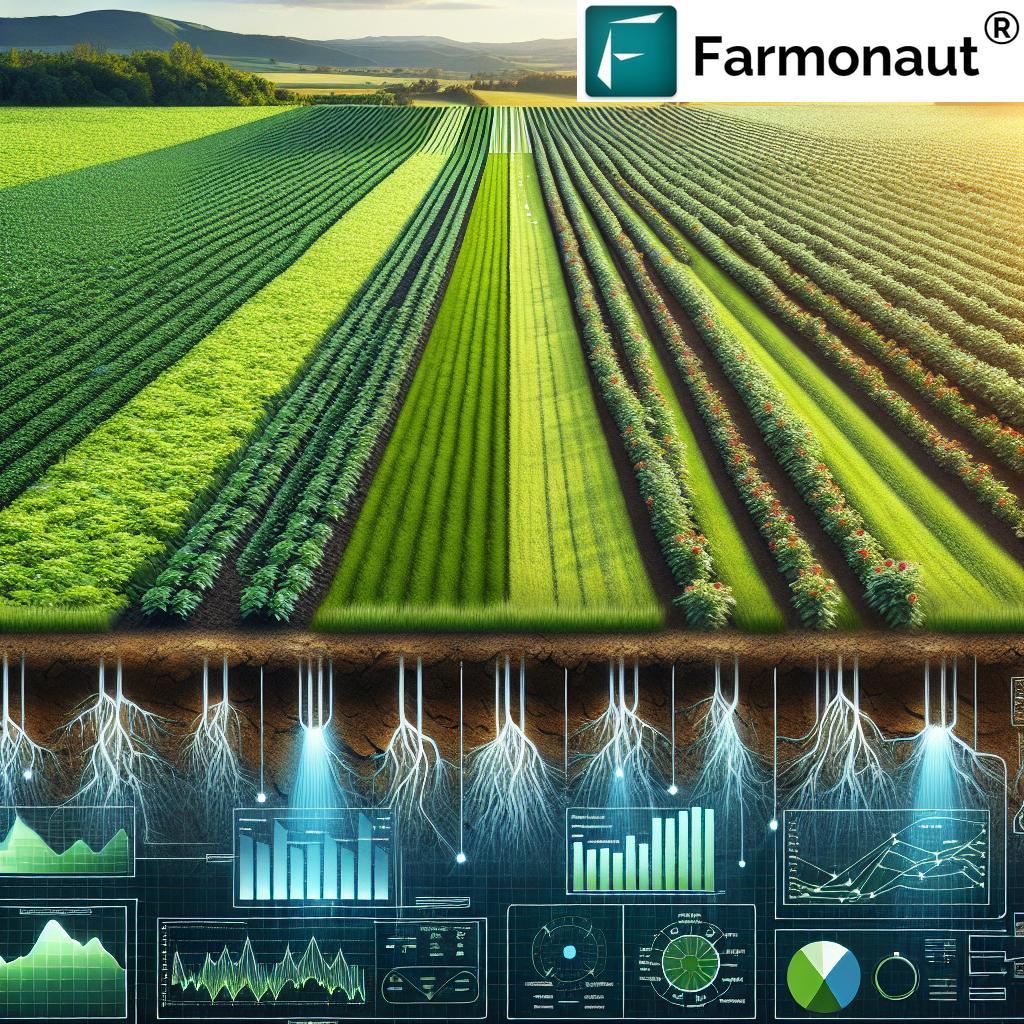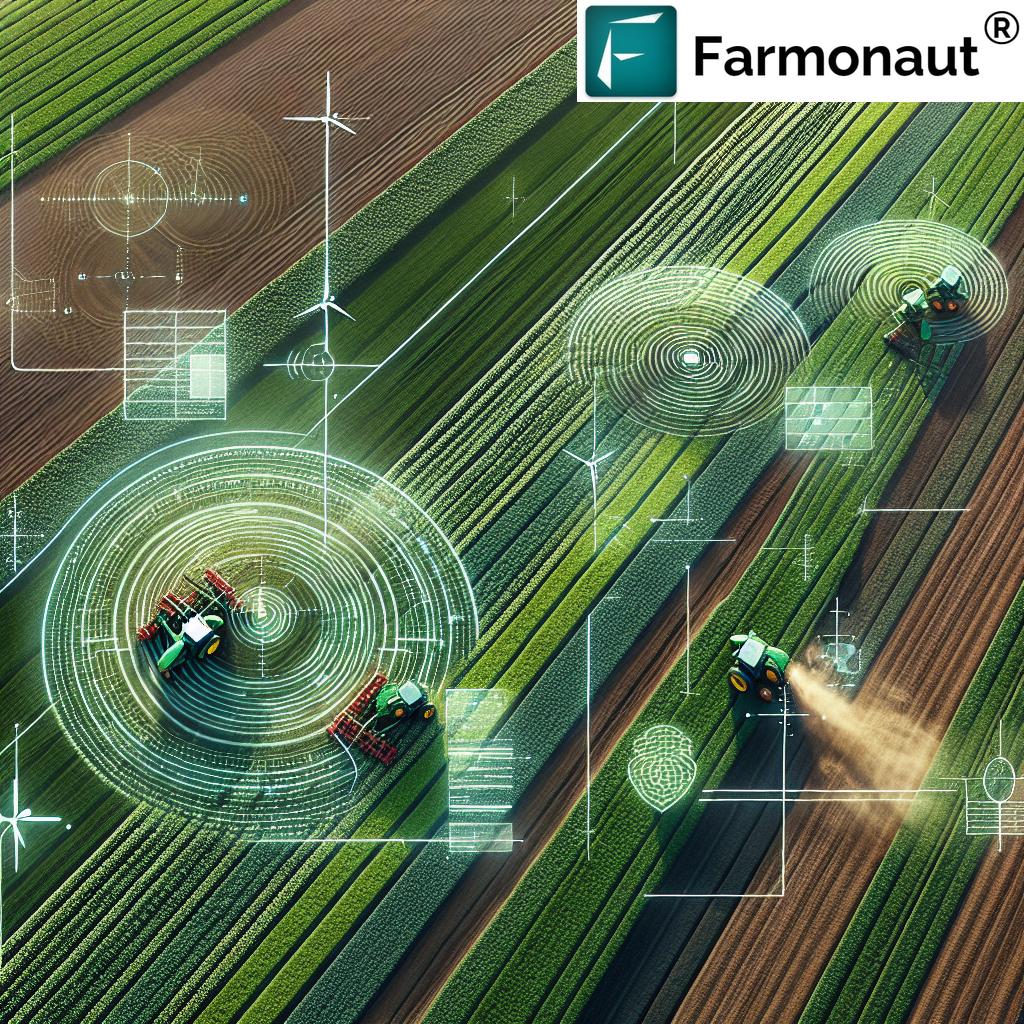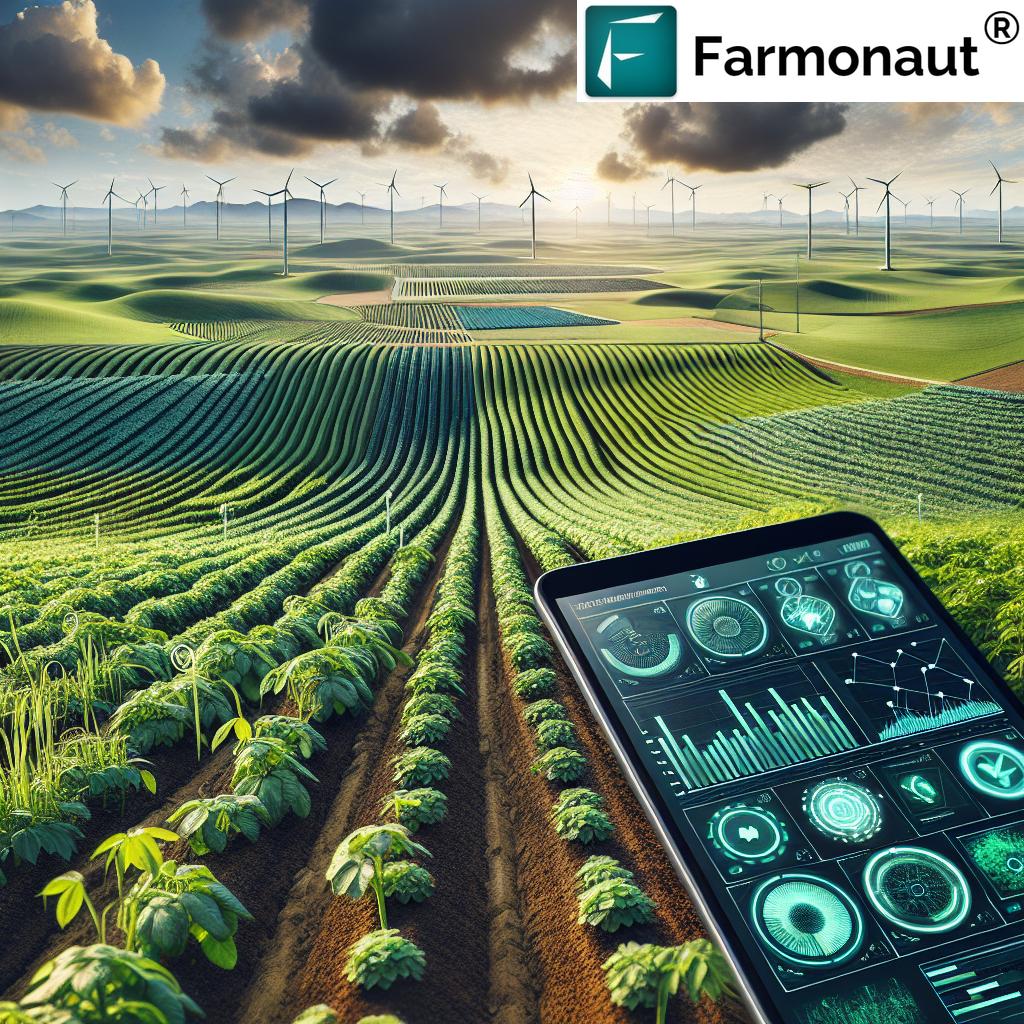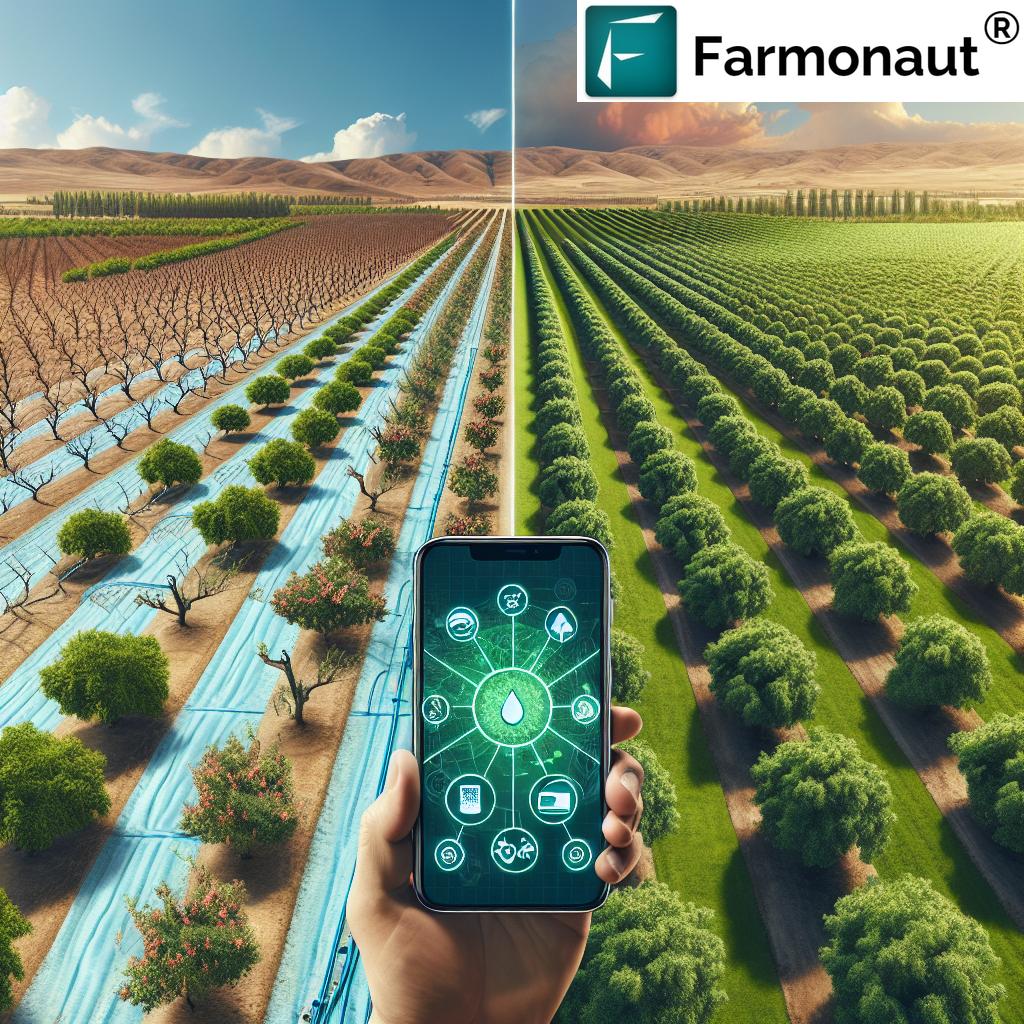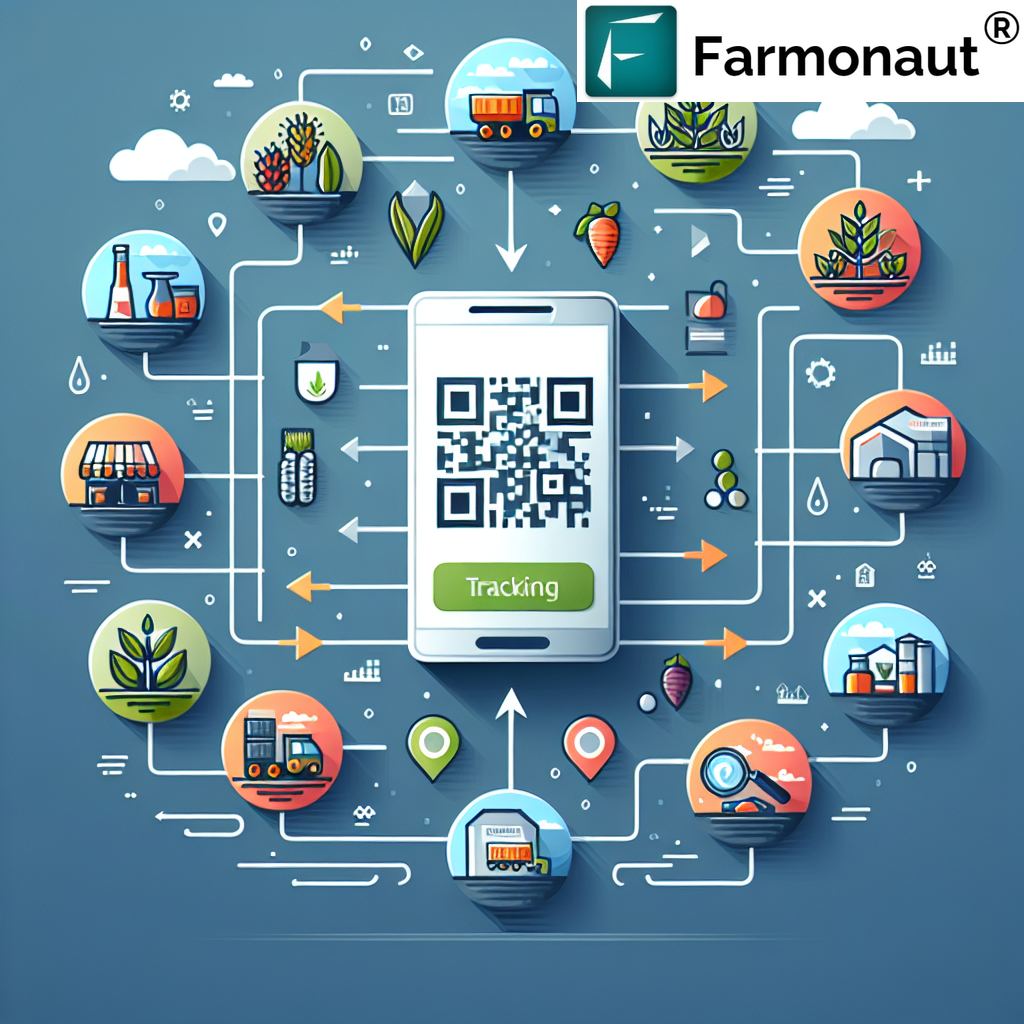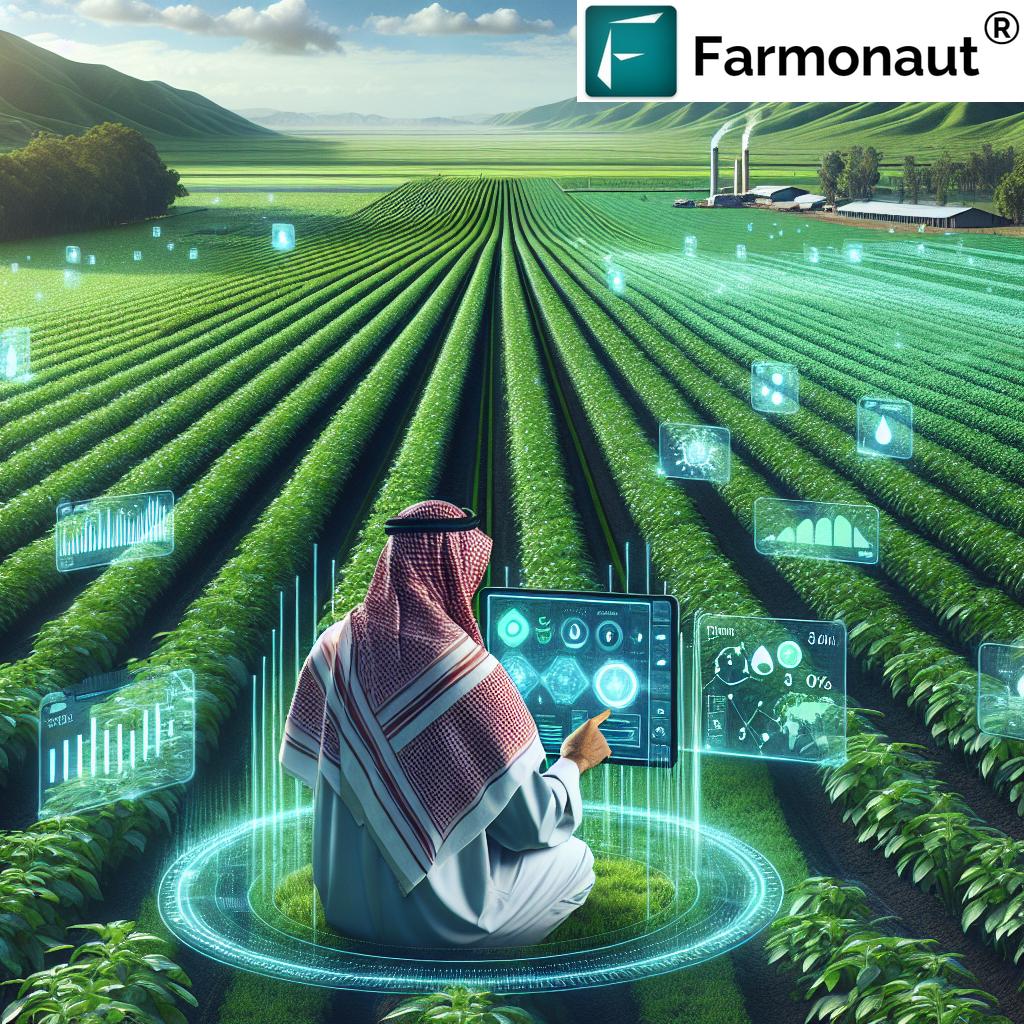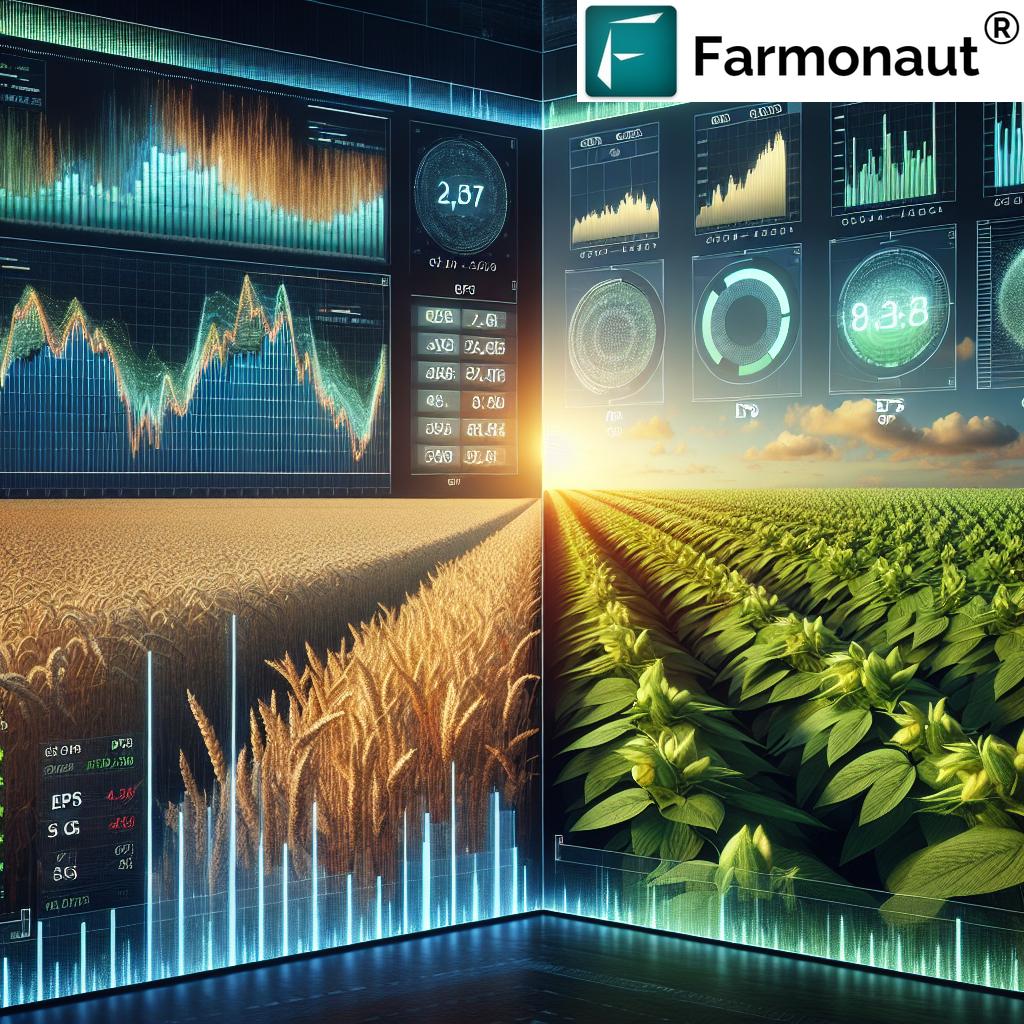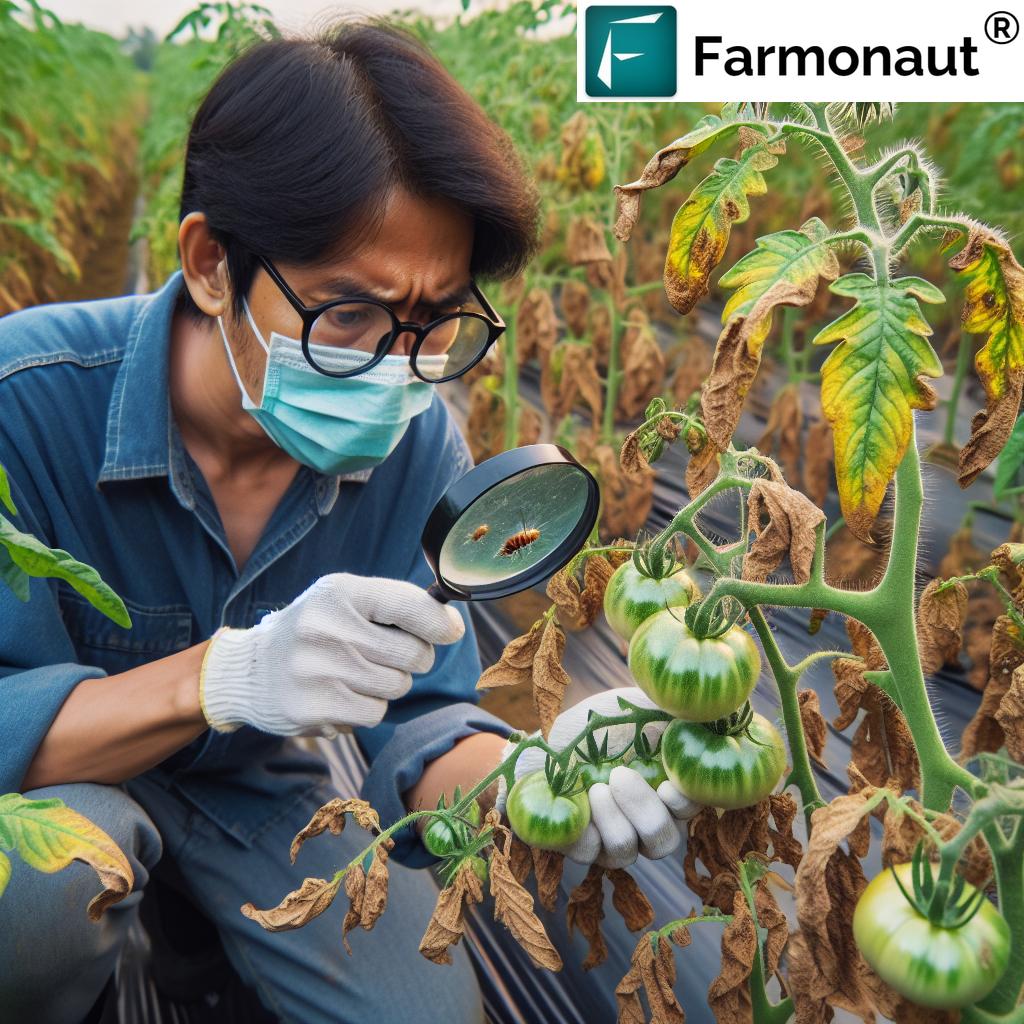AI Farming Technology: Unleash 7 Shocking Yield Boosts
Introduction: AI in Agriculture & Forestry
Artificial Intelligence (AI) is revolutionizing the world of agriculture and forestry. We are witnessing an unprecedented shift in farming practices, driven by data, sensors, and machine learning algorithms. From AI-powered crop monitoring to satellite imagery for forest conservation, AI technologies are enabling more productive, resource-efficient, and sustainable systems.
As we address global challenges such as climate change, labor shortages, and environmental degradation, AI in agriculture and forestry emerges as a key solution. These innovations tackle issues like disease detection, resource management, yield forecasting, and even illegal logging.
In this comprehensive guide, we’ll uncover seven shocking ways that AI can supercharge yields while advancing sustainability and precision agriculture. We’ll also show how innovators like Farmonaut are making cutting-edge AI technologies accessible to farmers around the globe.
“AI-driven precision farming can increase crop yields by up to 30% compared to traditional methods.”
7 Shocking Yield Boosts with AI Farming Technology
The core promise of AI in agriculture lies in its capacity to boost yields while advancing sustainable resource management. Let’s explore the top seven ways this is happening:
The Role of Artificial Intelligence in Agriculture – Farmonaut | Agritecture | Joyce Hunter
1. Crop Monitoring and Disease Detection with AI
AI-powered image recognition and computer vision systems can identify diseases, pests, and nutrient deficiencies before visible signs appear. Using drones, cameras, and ground-based sensors, these systems capture real-time crop imagery and analyze it with deep learning.
- Benefits: Early disease detection with AI leads to timely interventions, minimizing crop loss, reducing pesticide use, and optimizing yields.
- Key Terms: Machine learning, image analysis, disease detection, early warning, smart sensors.
For example, Farmonaut’s satellite-based platform combines multispectral satellite imagery with AI-powered crop health analytics. This supports farmers’ decision-making for irrigation, fertilization, and pest management.
Learn more about Crop, Plantation, and Forest Advisory Solutions
2. Autonomous Farming Machinery
Advances in autonomous tractors, harvesters, and drones represent a dramatic leap in farming automation. AI algorithms enable these machines to navigate fields, perform tasks with precision, and optimize routes for efficiency.
- Applications: Plowing, planting, spraying pesticides and fertilizers, and harvesting—all performed with minimal labor input and reduced operational costs.
- Outcome: Improved resource utilization, reduced waste, and more consistent yields.
Manufacturers like John Deere have developed autonomous tractors that efficiently apply inputs while monitoring soil health, crop growth, and environment.
Explore Farmonaut’s Advanced Crop Monitoring & Yield Prediction
3. Predictive Analytics for Yield Forecasting
AI models analyze historical weather patterns, soil data, and agronomic records to predict crop yields accurately. These predictive tools empower us to:
- Plan planting schedules based on optimal weather and soil conditions
- Allocate resources more efficiently, avoiding overuse of water, fertilizers, or pesticides
- Develop market strategies with better risk management
Predictive analytics enable not only yield maximization but also sustainable resource allocation.
Farmonaut’s Carbon Footprint Tracker adds another dimension—monitoring emissions and guiding climate-smart practices for a sustainable future.
4. Smart Irrigation Solutions
AI-based irrigation systems synthesize weather forecasts, crop water needs, and soil moisture sensor data to automatically optimize irrigation schedules. This helps to:
- Reduce water waste by only irrigating when and where it’s needed
- Cut energy costs and limit overwatering-related diseases
- Boost yields by maintaining ideal moisture levels for crops
Companies like Farmonaut supply real-time soil moisture monitoring and irrigation guidance powered by satellite-derived and on-ground data.
Discover Fleet Management Tools for optimizing irrigation and machinery operations.
5. AI for Supply Chain Optimization in Agriculture
AI technologies are essential in streamlining the agricultural supply chain. By analyzing market trends, monitoring inventory, and planning export routes, AI-driven systems:
- Minimize post-harvest loss and food waste
- Improve logistics and reduce time from farm to consumer
- Assess product quality at every stage, ensuring only top-grade items reach markets
Using AI, platforms like Farmonaut offer blockchain-based product traceability solutions for transparent, fraud-resistant agriculture supply chains.
Explore Farmonaut’s API for integrating real-time monitoring and supply chain analytics into your existing systems: API Access | Developer Docs
Farmonaut Web app | Satellite Based Crop monitoring
6. Livestock Monitoring with Sensors & AI
AI-powered livestock monitoring systems use sensors, RFID tags, and cameras to track animal health, nutrition, and behavior. These systems can:
- Detect early signs of disease or distress
- Optimize feeding schedules and improve animal well-being
- Increase overall productivity of dairy, poultry, and livestock operations
With centralized data collection and machine learning algorithms, livestock managers can make timely decisions to reduce losses and boost efficiency.
7. Forest Monitoring Systems and AI-powered Forestry Management
Forests are vital ecosystems threatened by illegal logging, biodiversity loss, climate change, and fire risk. AI for forestry leverages:
- Remote sensing, satellite imagery, and on-ground sensors for continuous forest monitoring
- Machine vision for wood classification, supporting anti-logging enforcement
- Wildlife tracking and environmental impact assessment
Learn about Forest & Agricultural Carbon Footprinting to assess environmental impact and promote sustainability.
Comparison Table of AI Innovations and Their Estimated Yield Improvements
| AI Technology | Application Area | Estimated Yield Boost (%) | Sustainability Impact |
|---|---|---|---|
| Precision Irrigation | Water Management | 8-25% | Significantly reduces water usage, prevents waterlogging, lowers energy costs |
| Predictive Analytics | Yield Forecasting & Resource Allocation | 10-18% | Optimizes farm inputs, reduces waste, supports planning |
| Automated Drones | Monitoring & Spraying | 7-20% | Minimizes chemical exposure, spot-treats fields, saves fuel |
| Smart Sensors | Soil, Crop, & Livestock Monitoring | 6-15% | Reduces waste, improves timing of interventions |
| AI Crop Disease Detection | Pest & Disease Control | 5-30% | Reduces need for chemicals, limits crop loss |
| Variable Rate Technology | Fertilizer & Pesticide Application | 12-22% | Reduces overuse, protects soil and waterways |
| Forest Health Monitoring | Forest Conservation | n/a (prevention) | Detects deforestation, supports biodiversity, minimizes fire/illegal logging risk |
Farmonaut’s Role in Data-Driven AI Farming Technology
At the forefront of AI-powered precision agriculture, Farmonaut brings advanced satellite-based farm management to the global community. Our mission is to democratize access to precision farming technologies through affordable, user-friendly platforms for farmers, agribusinesses, governments, and corporate agricultural supply chains.
- Satellite-Based Crop & Forest Monitoring: Multispectral satellite imagery provides continuous insights into crop health, forest status, soil moisture levels, and potential disease outbreaks (satellite imagery for forest conservation).
- Jeevn AI Advisory System: Real-time, AI-driven crop management, personalized farm advice, and weather forecasts, improving productivity and operational efficiency.
- Blockchain-Based Traceability: Ensures all agricultural products are traceable from farm to table, building trust in supply chains and combating food fraud.
- Fleet/Resource/Carbon Management: Fleet management tools optimize machinery and logistics while the carbon footprinting module (details here) enables sustainable regulatory compliance.
- App & API Accessibility: Farmonaut’s solutions are available across Android, iOS, web, and via API integrations for seamless adaptability to modern operations.
Why it matters: By harnessing AI for yield optimization, early crop disease detection, compliance, and operational excellence, Farmonaut makes the latest precision farming tools accessible to users globally.
Farmonaut Covered By Radix AI: Leveraging Remote Sensing and Machine Learning for a Greener Future
“Forestry monitoring with AI technology has improved deforestation detection rates by over 40% in recent years.”
🌾 Explore Farmonaut’s Affordable Farm Management Subscriptions
Get started with real-time satellite crop monitoring, AI-powered advisory, fleet, carbon management, and more.
Precision Farming Technologies: Focusing on Sustainability & Yield
Precision agriculture leverages AI, sensors, and big data for fine-tuned management of each field zone, plant, and animal.
Let’s examine some powerful precision farming technologies and their sustainable impact:
- Variable Rate Technology (VRT): AI models analyze field variability and adjust inputs like fertilizer or seed density, maximizing yield while reducing environmental impact.
- Sensors for Real-Time Monitoring: Smart soil sensors, weather stations, and drones capture data around-the-clock; AI helps interpret it for actionable insights.
-
Irrigation Optimization: Farmonaut offers satellite-derived soil moisture and AI-driven irrigation schedules to minimize water waste and costs.
Optimize Large Scale Farm Management with Farmonaut
By introducing AI-driven machines and data-driven advisory, we are boosting yields, protecting natural resources, and making farming resilient to climate-induced stresses.
AI in Forestry: Conservation, Monitoring, and Fire Detection
Forestry management is evolving with the integration of AI-powered forestry management systems and satellite imagery for forest conservation. Here’s how:
-
Forest Conservation Monitoring:
- AI analyzes satellite data and sensors to monitor forest health, deforestation, and illegal logging.
- Systems like XyloTron use AI for wood classification, helping tackle illegal timber trade.
-
Wildlife Monitoring:
- AI-powered cameras and sensors track wildlife movement and assess species population trends.
- Data informs conservation efforts and habitat preservation.
-
Forest Fire Detection:
- AI algorithms interpret satellite and sensor network data to provide early fire warning.
- Rapid response minimizes ecosystem and economic loss.
-
Climate Change Adaptation:
- AI models predict the impact of climate change on forests and recommend management strategies for adaptation and resilience.
The integration of AI, IoT, and satellite technology is making large-scale forest monitoring systems more reliable and actionable than ever before, contributing to global conservation goals.
Satellite-Based Crop Loan & Insurance Verification – Provides secure, reliable farm condition reports and supports risk reduction for both banks and farmers.
Challenges and Considerations in AI-driven Agriculture & Forestry
While the benefits of AI-driven farming and AI-powered forestry management are outstanding, we must also address their challenges:
-
Data Quality & Availability:
AI requires high-quality, reliable datasets. In developing regions, infrastructure and consistent data collection remain hurdles. -
Cost & Accessibility:
Initial investments can be high. Solutions like Farmonaut’s affordable subscription model help lower barriers for smallholder farmers and co-operatives. -
Technical Expertise:
Adoption often depends on training and support. User-friendly platforms and mobile apps are closing this knowledge gap. -
Ethical & Privacy Concerns:
The use of sensitive farm and forest data must comply with privacy standards and ethical guidelines for responsible AI.
Despite these challenges, ongoing advancements will continue to drive greater inclusion and positive impact across agricultural and forestry landscapes.
Future Outlook: AI, IoT & Sustainable Growth in Agriculture and Forestry
The future of AI in agriculture and forestry is exceptionally promising:
- Deeper IoT Integration: AI-driven platforms will incorporate even more IoT devices for comprehensive farm and forest monitoring.
- Global Data Collaboration: Cross-border sharing of data and AI models will support food security and large-scale conservation missions.
- Focus on Sustainability: AI will optimize input usage, reduce waste and emissions, and help combat climate change.
- Automation and Robotics: Advances in autonomous machinery will accelerate large-scale, efficient crop and forestry management efforts.
- Accessible, Data-Driven Solutions: With innovations like Farmonaut providing cost-effective, scalable, and intuitive technology, all farmers and land managers can join the AI revolution.
AI farming technology is not only revolutionizing yields — it is reshaping our vision for resilient, sustainable food and forest systems worldwide.
FAQ: AI Farming & Forestry Technologies
What is AI in agriculture and why is it important?
AI in agriculture refers to the use of Artificial Intelligence, machine learning, and data science to optimize crop production, resource management, and farming operations. It brings precision, efficiency, yield boosts, and supports sustainability goals.
How do smart irrigation solutions work?
Smart irrigation solutions use sensors and AI models to analyze soil moisture, weather forecasts, and crop needs, delivering the optimal amount of water where and when it’s needed. This conserves water, reduces costs, and maximizes yield.
How are forests monitored with AI?
Forest monitoring systems combine satellite imagery, sensors, and AI algorithms to track forest health, detect illegal logging, identify fire risks, and assess biodiversity. This supports timely responses and sustainable management.
How can I get started with Farmonaut’s technologies?
Farmonaut offers precision agriculture and forest monitoring tools via web, Android, and iOS apps, plus simple subscription-based packages, detailed API integrations, and comprehensive developer documentation.
What role does AI play in climate change adaptation in agriculture and forestry?
AI helps predict climate change impacts on crop yields and forest ecosystems, allowing managers to adapt strategies, minimize losses, and foster climate resilience.
© Farmonaut | advancing precision farming, sustainability, and AI for global yield improvement.


